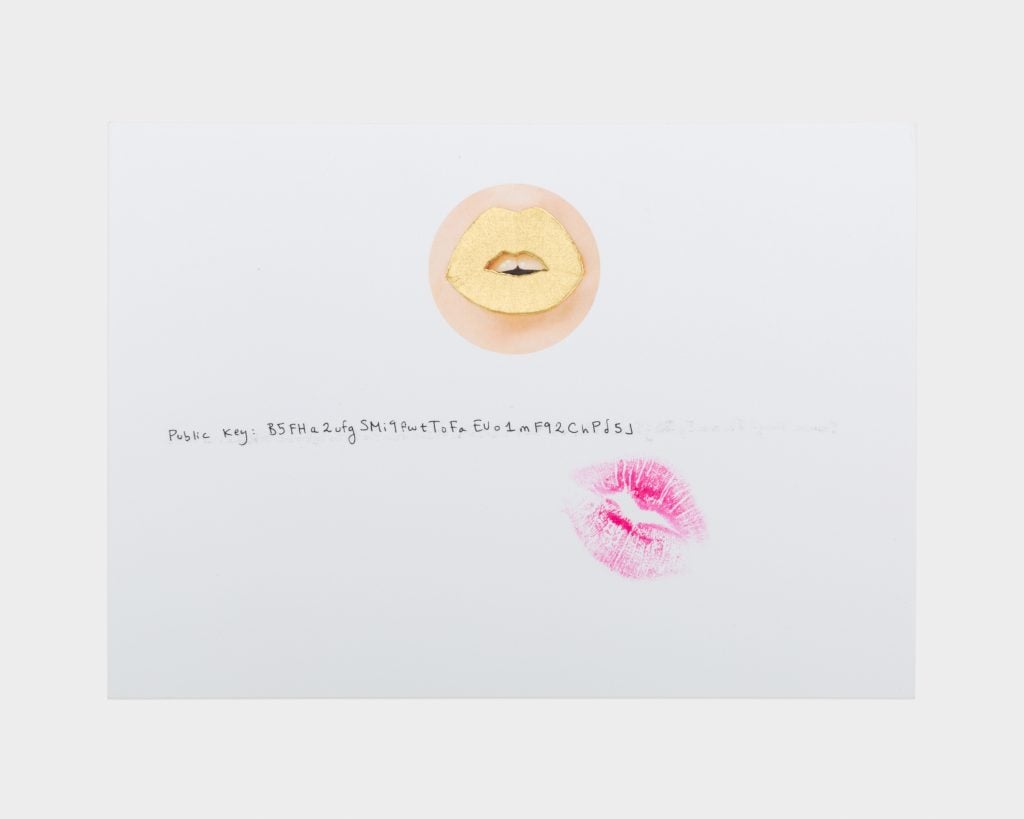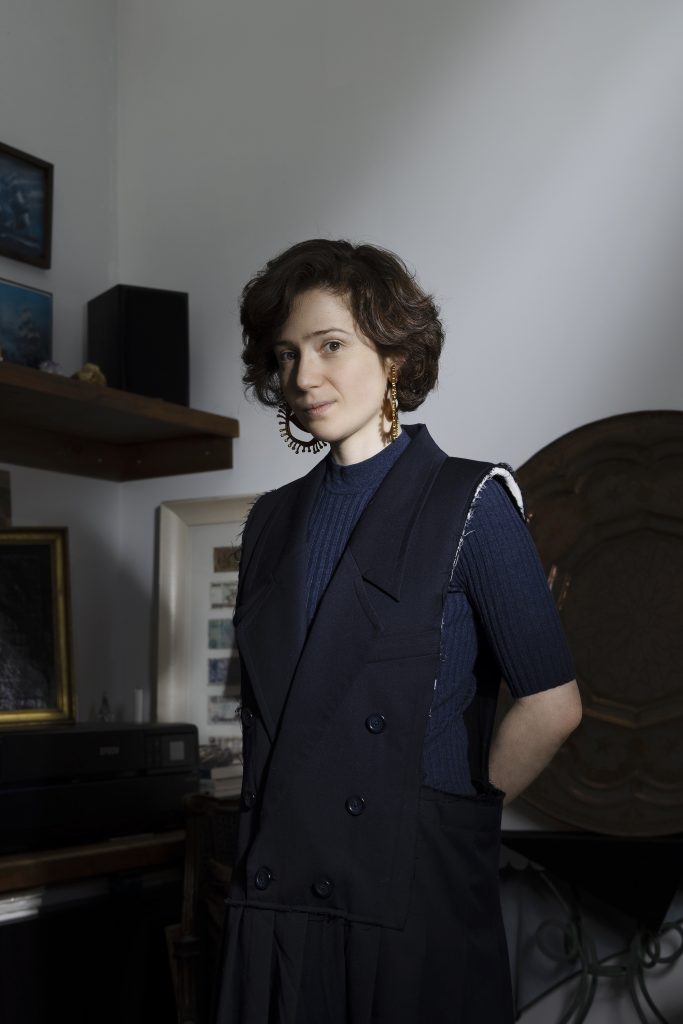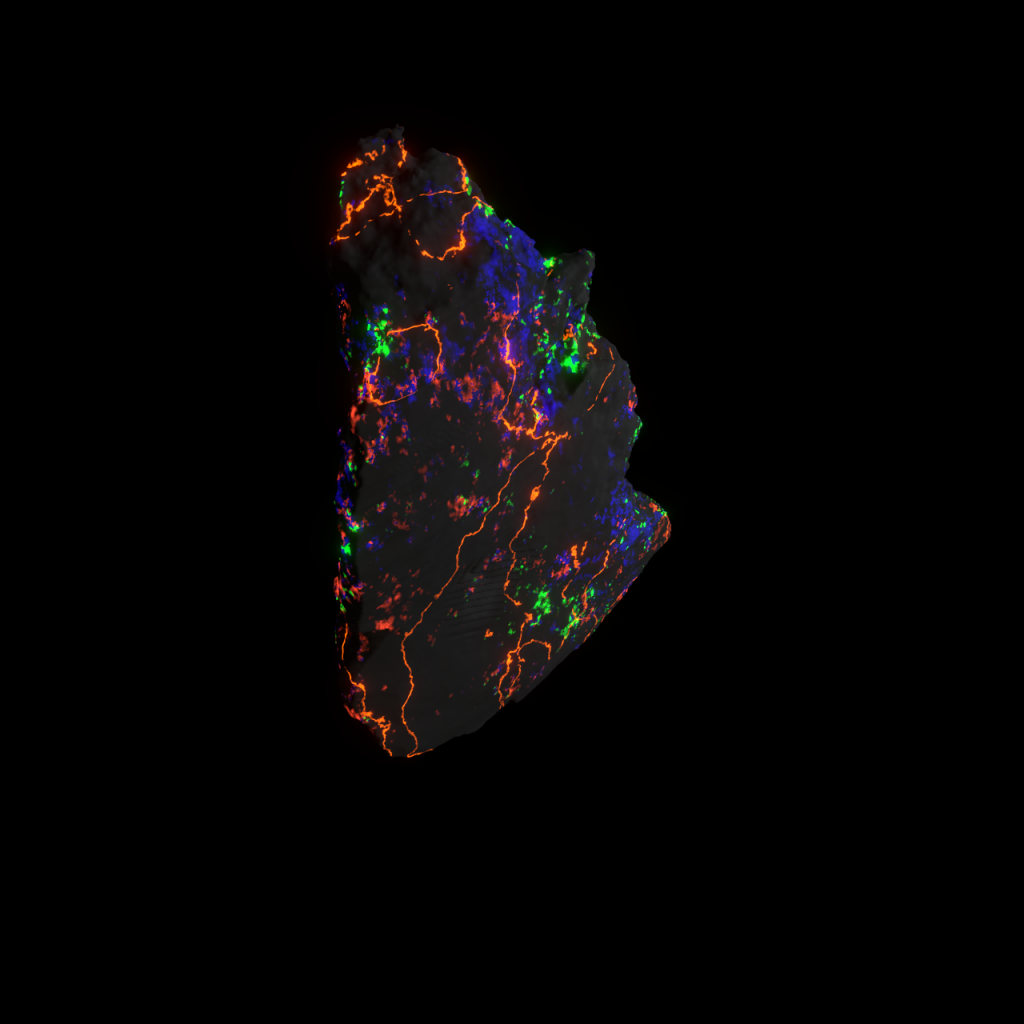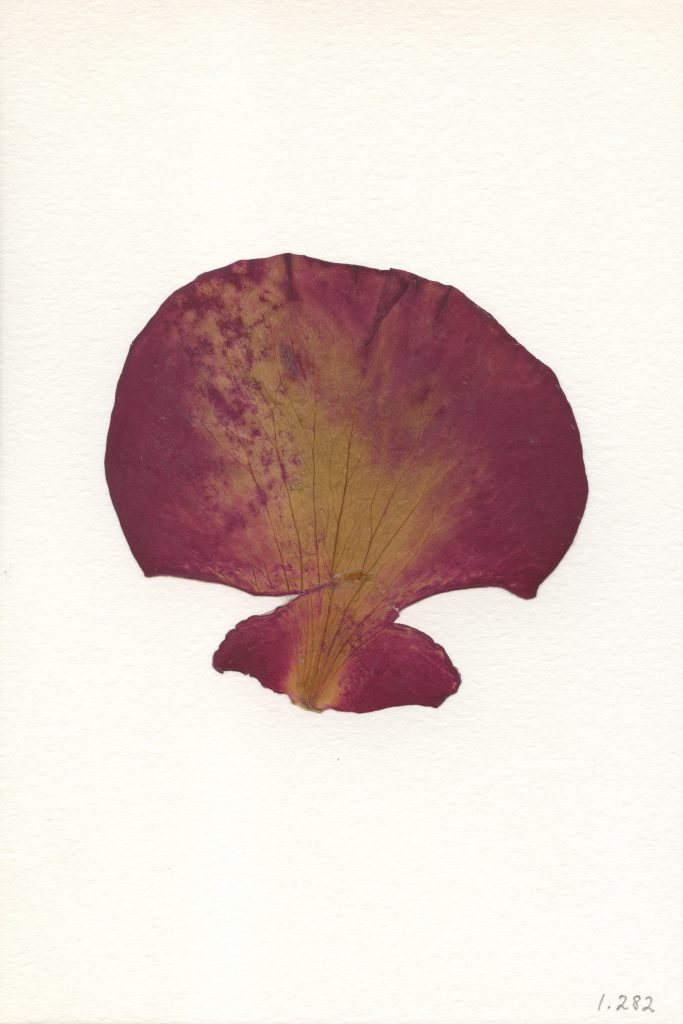NFTs
Sarah Meyohas’s Pioneering Bitchcoin NFT Is Entering the Centre Pompidou’s Collection in a Landmark Acquisition of Digital Works
It will join 17 other NFTs in the French national collection.

It will join 17 other NFTs in the French national collection.

Min Chen

In 2015, five months before the emergence of Ethereum, Sarah Meyohas minted her first 200 Bitchcoins. The blockchain-verified tokens were intended to operate as art as much as digital currency, which collectors could hold, sell, or trade for art by Meyohas—a conceptual transaction that tied the speculative worth of cryptocurrency with the subjective value of art. The young artist (and Wharton Business School grad) launched Bitchcoin at a gallery show where visitors could drop Bitchcoin for her photographic works, with a press release that cheekily trumpeted: “Investing in Bitchcoin is investing in Meyohas.”
However incisive, Bitchcoin could very well have been a low-key conceptual endeavor, if not for the sensation NFTs set off in 2020. Then again, amid the resurfacing of historic blockchain-backed works, Meyohas’s name was rarely invoked in a space and marketplace dominated by top-selling, always-online male artists such as Beeple.

Sarah Meyohas. Photo: Steve Benisty.
But no more. Last month, the Centre Pompidou announced the acquisition of two Bitchcoins, which are joining 17 other NFTs being acquired by the institution in the first-ever such acquisition by a French national museum. These other works include an Autoglyph, a CryptoPunk, new works by Jill Magid and Jonas Lund, and historic digital art by Robness and Fred Forest.
“It’s doubly exciting that my first museum acquisition can also be a historic one,” Meyohas told Artnet News. “I’m thrilled for each of the 12 other artists involved as well.”
The crypto artworks join the contemporary art museum’s sizable collection of new-media works, which the Pompidou has been amassing since the 1970s. For curators Macella Lista and Philippe Bettinelli, who are overseeing the Pompidou’s NFT endeavors, the acquisition entirely squares with a museum dedicated to “addressing the impulses of innovation,” they told Artnet News over email.

Larva Labs, CryptoPunk #110 (2017). Photo: © Larva Labs
“It is interesting to see how [this] creativity started from outside of the art world, or from the specialized domain of digital arts, before slowly echoing among the general landscape of contemporary art,” they said in a joint statement. “Artworks related to the blockchain are moving many lines and provide a critical appreciation of what is going on today.”
The museum plans to present the works as part of its permanent collection in spring this year (an online exhibition is also being gamed out for a later phase, possibly within “a specifically conceived digital space”). This showcase will occupy the fourth floor of the Pompidou where crypto art will be framed as part of the Conceptual and Minimal art traditions. As Lista and Bettinelli emphasized, “NFTs didn’t come ‘out of the blue.’”

Agnieszka Kurant, Sentimentite-Mt Gox Hack (2022). Photo: Kunstgiesserei St Gallen AG, courtesy of the artist and Zien.
While the acquisition is heavy on new projects—ranging from the conceptual, such as Agnieszka Kurant’s Sentimentite-Mt. Gox. Hack (2022), to the accessible, namely CryptoPunk #110, donated as part of Yuga Labs’s Punks Legacy Project—pioneering NFTs are represented too.
Most prominently, there’s John F. Simon Jr.’s Every Icon (1997), Emilie Brout and Maxime Marion’s Nakamoto (The Proof) (2014), and of course, Bitchcoin.

Sarah Meyohas, Bitchcoin #1.282 (2015 – 2021). Photo: © Sarah Meyohas, courtesy of the artist and Marianne Boesky Gallery, New York and Aspen.
Notably, the Pompidou’s acquisition further nods to Meyohas’s 2017 project, Cloud of Petals, which was backed by Bitchcoins. That year, the artist released reserved Bitchcoins on the occasion of her “Cloud of Petals” exhibition at Red Bull Arts in New York. There, the 3,291 tokens were linked to a similar number of physical rose petals, each meticulously plucked, photographed, and fed into an A.I. dataset capable of generating yet more images of petals. Holders could “burn” their Bitchcoin to claim its unique petal.
Again, the work explored the tension in tying a cryptocurrency to an entirely subjective view of beauty, though this time, deployed digital technologies to further examine what human labor might mean in an era of automation.
“Cloud of Petals is a conceptual body of work that spans film, artificial intelligence, virtual reality, performance, data science, and photography,” said Meyohas. “It’s wonderful to see this work enter the Centre Pompidou’s collection alongside Bitchcoin, a project that proves blockchain-based work can encompass each of those and more.”

Sarah Meyohas, Cloud of Petals (2017). Photo: © Sarah Meyohas, courtesy of the artist and Marianne Boesky Gallery, New York and Aspen.
With its two Bitchcoins, the Pompidou intends to keep one token and exchange the other for a preserved rose petal. To Lista and Bettinelli, the project stands as “a seminal piece that touches on the core of what is at stake, which is the complete interlocking of symbolic, cultural, and financial values.”
Indeed, while it’s taken almost a decade for her trailblazing project to receive institutional recognition, Meyohas, it seems, has been content to let Bitchcoin’s footprint do the talking.
“Sometimes the projects that don’t tweet the loudest are the most thoughtful ones,” she said. “I’m thankful that the curators at the Pompidou have the critical judgment to differentiate.”